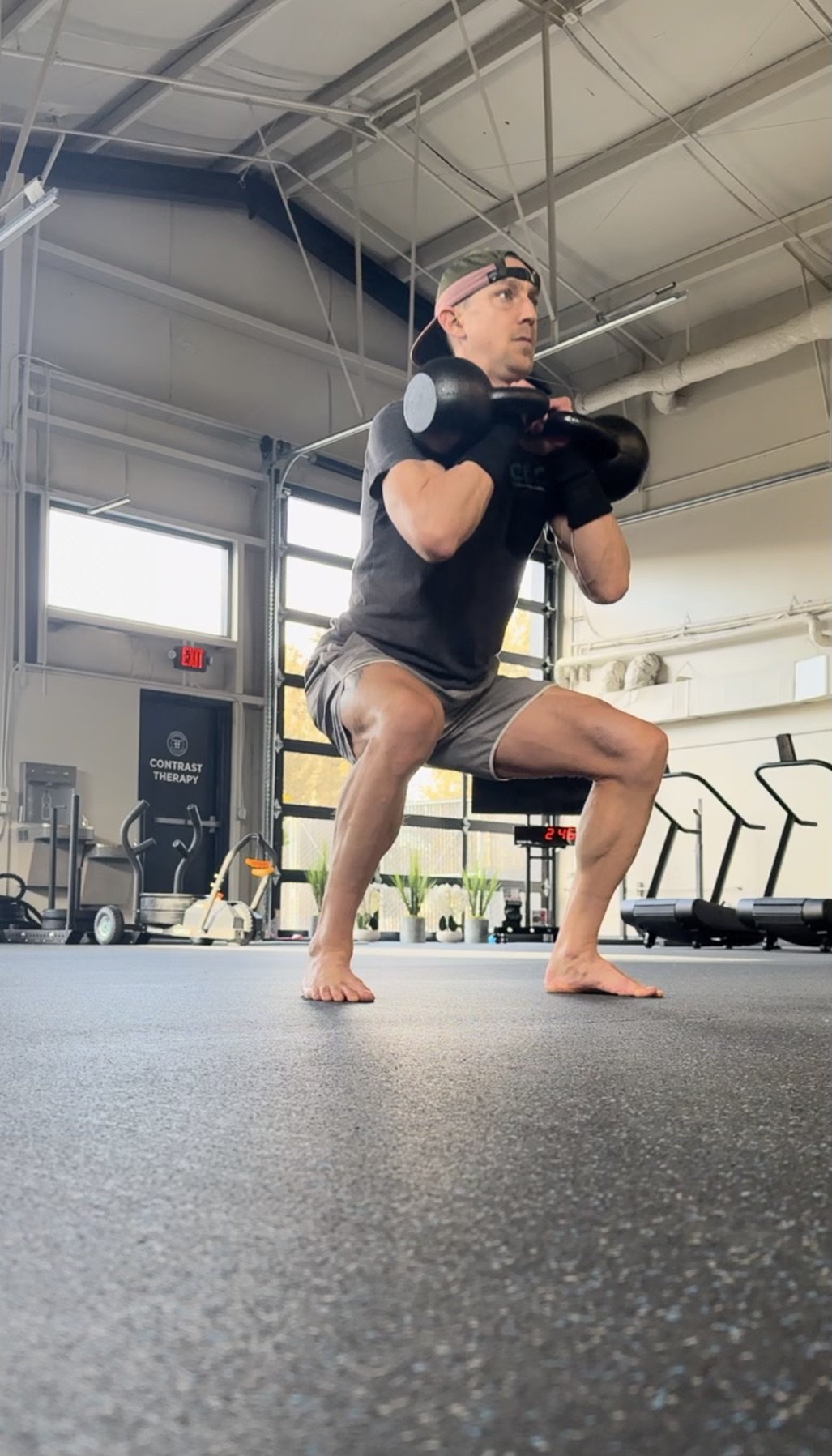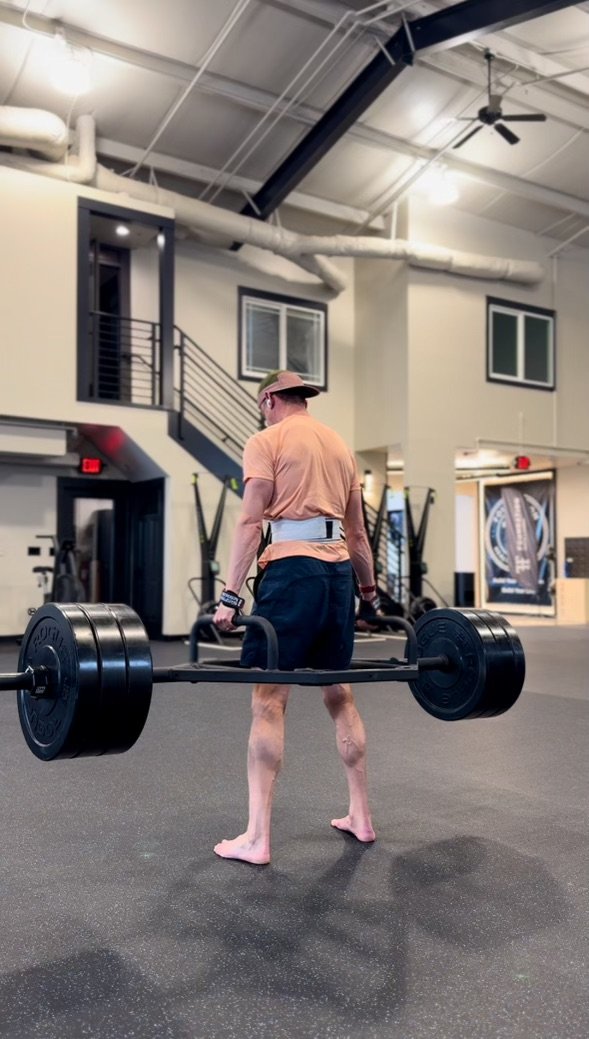STRENGTH TRAINING SIMPLIFIED
WE ALL KNOW “LIFT HEAVY SHIT,” BUT HOW?
by Adam Goulet and Chris Bagg
Strength training for endurance athletes has always been a confusing topic. HOW many times a week should I lift? WHEN should I lift? Heavy? Bodyweight? Where is all of this "lift heavy shit" coming from?
In the SHORT video above, Adam Goulet, one of our coaches, breaks down the four movements of strength training, why strength training is challenging for endurance athletes, when you should lift during the day for maximum effect, and a simple approach for periodizing or scheduling your lifting throughout the year.
Four Types of Movements
As you learned in the video, there are four basic movements we want to achieve while lifting:
Lower body push (squats, for example)
Lower body pull (deadlifts!)
Upper body push (bench press or pushup)
Upper body pull (pull up or pull down)
What about core, you're asking? Well, the reason it's not in the list above is two-fold: first of all, everything is a core movement, as long as you are breathing correctly and maintaining good posture. Second, core work isn't really a movement, it's...anti-movement as you attempt to build the buttressing power of a strong core. So you should definitely do one or two core movements each session, but also if you focus on good posture and good breathing a lot of the work will happen in those big movements.
How Often, When, and How Heavy?
Some providers out there say three times a week. Some say two. Some say one. Some say heavy. Some say light.
Yikes.
Here's our approach: during the off-season and early season, two to three times a week will really supercharge your coming season. If you can maintain that cadence for a third of the season, or about three or four months, you'll be in fine shape the rest of the season, during which you only need to lift once and in a maintenance capacity.
OK, how about WHEN during the day? We say last, since studies have shown that endurance work (which is catabolic or literally eating your body) done after strength work can lessen the effectiveness of the strength work.
And weight? What about weight? Lifting heavy is crucial to your development and your long term health. But please don't just go and start squatting four plates plus the bar? You'll die, and we don't want you to die on our watch. Build up to it.
One Session to Rule them All
This would be a good session to use after you have lifted for about a month to get ready for heavier lifting. Use this template and simply change whether you are focusing on bilateral squat or deadlift that day, and do the other movement on the other day.
A note on intensity: endurance athletes hate to rest, but it is CRUCIAL for lifting. Think of lifting more like sprinting: you really need to rest a LOT in between sprints if you actually want maximal efforts. Lifting is the same. When you are lifting heavy, you should take 3-5 minutes in between each set. Yup. You heard us correctly. Bring a book.
When we say "RPE 7-8," what that means is that the final rep should be challenging but still doable. But you should still also have a spotter.
Five minutes of warming up
Mobility movements that address the joints you are working today
Two good core movements. We love dying bug and anything anti-rotations. Probably 2-3 sets of 30-50 reps.
Warmup set of bilateral squat or bilateral deadlift
3-5 sets of 5-8 reps of bilateral squat or bilateral deadlift at RPE 7-8
Warmup set of upper body pull movement
3-5 sets of 3-8 reps of upper body pull at RPE 7-8
Warmup set of unilateral lower body push or pull (single leg squat or single leg deadlift—if you did bilateral squat above, do unilateral pull here and vice versa)
3-5 sets of 5-8 reps of unilateral lower body push or pull at RPE 7-8
Warmup set of upper body push movement
3-5 sets of 3-8 reps of upper body push at RPE 7-8
If you'd like to get more insight, however, please watch the video and learn more from Adam!


